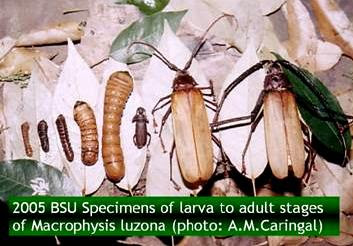
* view of the Peat-Marsh Forest
This post is long overdue and it would be equivalent to killing the anticipation if I were not to talk of Lobo, Batangas.
My fascination of Lobo came about when we attended the “Regional Symposium on Research, Development and Extension Agenda for Biodiversity and Ecotourism in Lobo, Batangas and R&D Planning Workshop.” The activity was essentially an attempt to strengthen the different sectors in Lobo concerned with its biodiversity and ecotourism. I felt privileged to be part of that planning stage. The matrices of plans and projections were good especially because they are to be used in the near future. DOST spearheaded this work and so I am quite contented to think that the plans will be carried out.
Almost all the presentations were about or from Lobo, acquainting me in the end about the great potential of Lobo as a tourism hub in southern Batangas. But more than that, I have come to realize how much can be seen in Lobo, both in the literal and historical senses. Most of the places in the town have been visited and studied by researchers and perhaps its historical heritage is undergoing a similar rigorous research too. It would be good to ‘discover’ the town personally and in this endeavor, nothing can be more good than having connections.
It was thus fortunate that I was able to meet Prof. Anacleto “Sir Clet” Caringal, who was game enough to discuss to me some info about Lobo. I have expressed to him my desire to visit Lobo this summer but then budget must be considered first. The photos that you see here were provided by Sir Clet, and I hope that I have been discrete enough not to put everything from the documents he sent to me.

* the life stage of ook, a rare species of what we commonly call salagubang, found in the forests of Lobo
So what am I anticipating for? Perhaps visiting Lobo’s mountains, the Malabrigo Lighthouse, the famed peat forest, and its beaches. Or eating the town’s fruit products and getting to know its people culturally.
I may have to mark this posting date and after a year, I shall have to make an update here about the progress of the plans that have been laid out for Lobo’s future.
[Acknowledgement: Trailer Pransis sends his message of gratitude to Sir Anacleto Caringal for providing him with reading materials about their studies in Lobo as well as informative photographs of the town’s flora and fauna and its beautiful sceneries.]



































